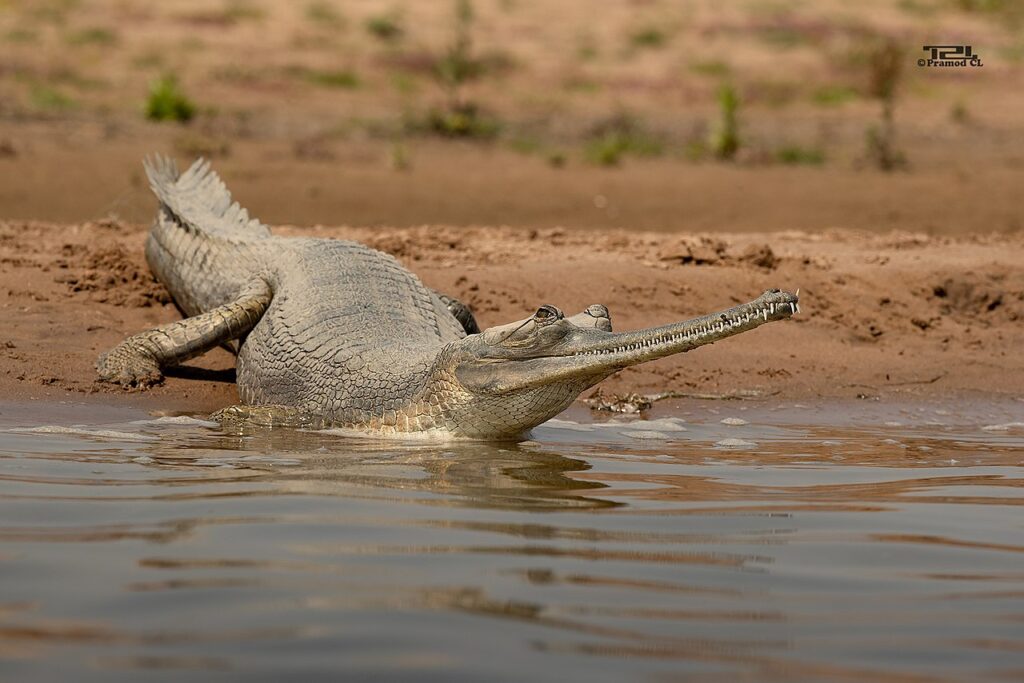The Ganges River, also known as the Ganga, is one of the most sacred and culturally significant rivers of the world. The river is also home to a vast array of biodiversity, including several endangered species. But unfortunately Ganga is facing numerous threats, both natural and anthropogenic, putting its biodiversity and millions of people depending on it at risk.
The Biodiversity of the Mighty Ganga
The Ganges River is home to a unique and diverse array of biodiversity. The river basin is one of the most biologically diverse areas in the world, with over 140 fish species, 90 amphibian species, and 34 reptile species found in the river and its tributaries. Additionally, the river supports a diverse range of mammals and bird species, including several endangered and endemic species.
The Mammals of the Ganga
The major mammalian species found in the Ganga River include the Gangetic river dolphin and three species of otter, viz. smooth-coated otter, Asian small clawed otter and Eurasian otter. Being at the top of the food chain, they rapidly move between habitats, transport nutrients and energy between systems and stabilize the ecosystem. The Ganges River Dolphin, also known as the Susu, is a freshwater dolphin that is endemic to the river. However, its population has declined rapidly due to pollution, dam construction, and accidental entanglement in fishing nets. According to the IUCN, the Ganges River Dolphin is critically endangered, with a population of less than 2,000 individuals.
“Did you know? Gangetic river dolphin is the National aquatic animal of India.”
Among the reptiles, the Gharial Crocodile, is unique to the river. The crocodile, which has a long, narrow snout, is adapted to catch fish in the fast-flowing river. However, the construction of dams and barrages has altered the river’s flow, which has impacted the crocodile’s habitat making it endangered.

Other reptiles include several species of turtles and terrapins. The Ganges Softshell Turtle and the Indian Roofed Turtle species are listed as vulnerable by the IUCN, with populations that are declining due to habitat loss, pollution, and over-harvesting for the illegal pet trade. The Northern River Terrapin, also known as the Bengal River Terrapin or Batagur baska, is one of the most critically endangered species found in the Ganges River basin. This species of freshwater turtle is known for its unique appearance and behavior. Conservation efforts are underway to protect the Northern River Terrapin and its habitat. One project, led by the Turtle Survival Alliance (TSA), is working to breed and release captive-bred turtles back into the wild.
The Ganga is a birding hotspot
The Indian Skimmer is a bird species that is found exclusively in the Ganges River basin. The bird feeds on small fish and insects, and is adapted to skim the water’s surface to catch its prey. The Indian Skimmer is listed as vulnerable by the IUCN, with a population of less than 10,000 individuals.
The Lesser Adjutant Stork (Leptoptilos javanicus) & the Sarus Crane (Grus antigone) are large birds found in the Ganges River basin. The stork is an important scavenger, feeding on carrion and other organic matter found in wetland habitats. The Sarus crane is an important cultural and religious symbol. Both of these birds are important indicator species as they are sensitive to changes in water quality and habitat degradation.
The Golden Mahaseer
The Golden Mahaseer (Tor putitora) is a large freshwater fish that is found in the Ganges River basin. This fish is considered to be a flagship species for the conservation of freshwater ecosystems in the region, due to its importance as a food fish and its cultural and religious significance. The Golden Mahseer is also an important indicator species, as it is sensitive to changes in water quality and habitat degradation.
Summary Table: Representative aquatic fauna from the Ganga River
| Class | Representative species | IUCN status | CITES | IWPA status |
| Reptile | Gharial | Critically Endangered | Appendix I | Schedule I |
| Reptile | Northern river terrapin | Critically Endangered | Appendix II | Schedule I |
| Mammal | Gangetic river dolphin | Endangered | Appendix I | Schedule I |
| Mammal | Asian small-clawed otter | Vulnerable | Appendix II | Schedule I |
| Mammal | Smooth coated otter | Vulnerable | Appendix II | Schedule II |
| Fish | Golden mahaseer | Endangered | – | – |
| Bird | Lesser adjutant stork | Vulnerable | – | – |
| Bird | Sarus crane | Vulnerable | Appendix II | Schedule IV |
Conclusion
The Ganges River is a unique and biologically diverse ecosystem that is home to several endangered and endemic species. The threats facing the river, including pollution, dam construction, and climate change, are putting the biodiversity of the river at risk. It is crucial that immediate action is taken to protect and preserve the Ganges River and its unique biodiversity for future generations.
Help us Help Them! Think Wildlife Foundation is a non profit organization with various conservation initiatives. Our most prominent campaign is our Caring for Pari intiative. Pari is a rehabilitated elephant at the Wildlife SoS Hospital. 25% of the profits from our store are donated to the elephant hospital for Pari. Other than buying our wonderful merchandise, you could donate directly to our Caring For Pari fundraiser.
Written by: Ram Dayal Vaishnav
